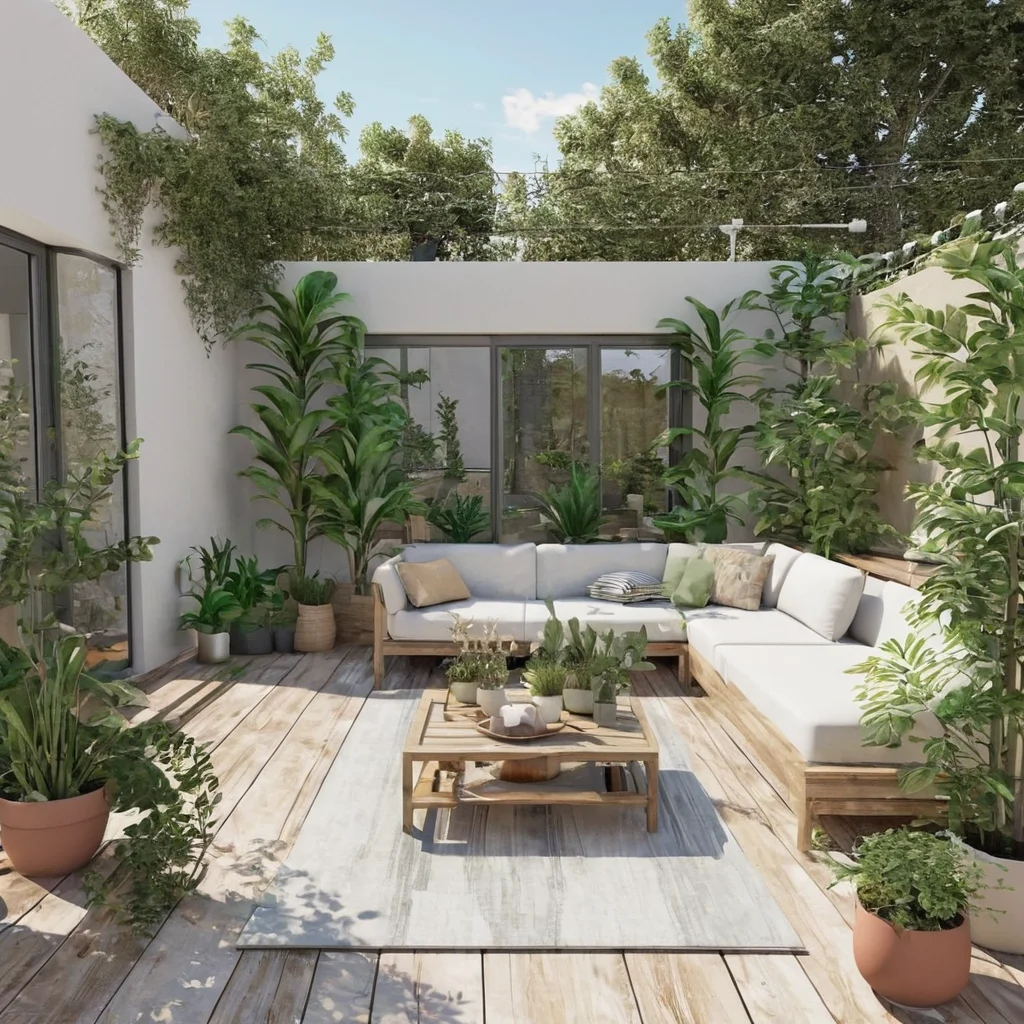Creating a vertical garden for balcony spaces is another way to improve aesthetics, maximize space and improve air quality. Whether you’re looking to create an indoor open garden or an outdoor open garden, choosing the right layout is important to ensure it’s functional and aesthetically pleasing. Here’s how you can select the perfect vertical wall garden design for your balcony.
Assess Your Balcony Space
Before diving into designing a vertical garden wall, evaluate your balcony’s size, layout, and environmental conditions. Key factors include:
- Sunlight: Determine how much sunlight your balcony receives daily.
- Ventilation: Ensure proper air circulation for your plants.
- Weight Limit: Check the balcony’s weight-bearing capacity if you plan to use heavy materials or large planters.
Define Your Purpose
Are you creating a vertical wall garden for aesthetics, to grow herbs, or to purify the air? Your goal will guide your choices in design and plant selection. For example:
- Indoor vertical garden: Best suited for air-purifying plants like peace lilies and snake plants.
- Outdoor vertical garden: Ideal for flowering plants and vegetables like cherry tomatoes or peppers.
Select the Right Vertical Garden Type
There are several types of vertical garden designs to choose from:
- Wall-mounted gardens: Perfect for small balconies, utilizing vertical space effectively.
- Freestanding structures: Portable options that offer flexibility.
- Pocket planters: Space-saving solutions great for herbs and smaller plants.
- Hydroponic systems: Modern and low-maintenance, suitable for an indoor garden vertical setup.
Choose Materials Wisely
Materials impact the durability and appearance of your vertical garden wall. Common options include:
- Wood: Aesthetic but requires maintenance.
- Metal: Durable but may heat up under direct sunlight.
- Plastic: Lightweight and budget-friendly.
- Geotextiles: Ideal for pocket planters in an indoor vertical garden.
Pick the Right Plants
Your plant choices will depend on the lighting and purpose of your vertical garden for balcony:
- Low-light plants: Perfect for an indoor vertical garden (e.g., pothos, ferns).
- Partial sunlight plants: Herbs like basil and mint.
- Full sunlight plants: Flowering species and vegetables for an outdoor vertical garden.
- Air-purifying plants: Ideal for enhancing the quality of an indoor garden vertical.
Plan for Maintenance
Maintaining a vertical garden wall can be straightforward with proper planning:
- Install a drip irrigation system for consistent watering.
- Use quality soil and appropriate fertilizers.
- Regularly prune plants and inspect for pests.
Budget and Cost Considerations
Building a vertical wall garden can range from affordable DIY setups to premium professional installations. Factors affecting cost include materials, plant types, and additional features like irrigation systems or decorative elements.
Incorporate Creative Design Elements
Add a personal touch to your vertical garden with:
- Themed designs such as minimalist or tropical styles.
- Decorative planters and hanging pots.
- LED lighting for an enchanting look, especially in an indoor vertical garden.
Designing the perfect vertical garden for balcony spaces requires careful consideration of space, materials, plants, and maintenance needs. Whether you’re creating an indoor garden vertical for your living room or an outdoor vertical garden to enjoy fresh air, a well-planned design will transform your balcony into a lush and functional oasis.
Ready to start your vertical garden wall journey? Visit a local garden center or consult with experts for personalized advice. Don’t forget to share your stunning vertical wall gardens on social media to inspire others!

